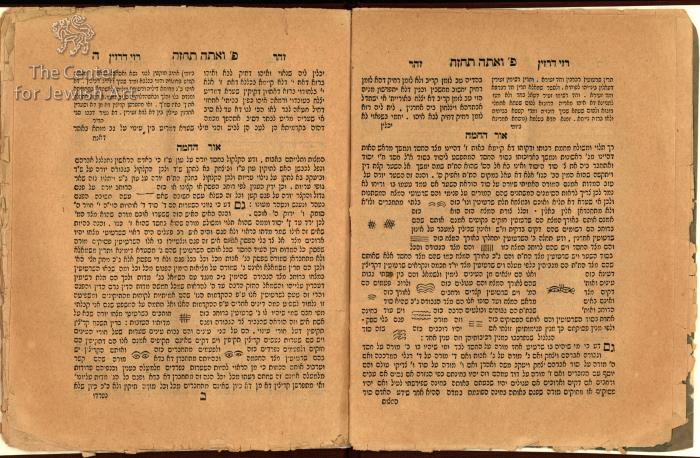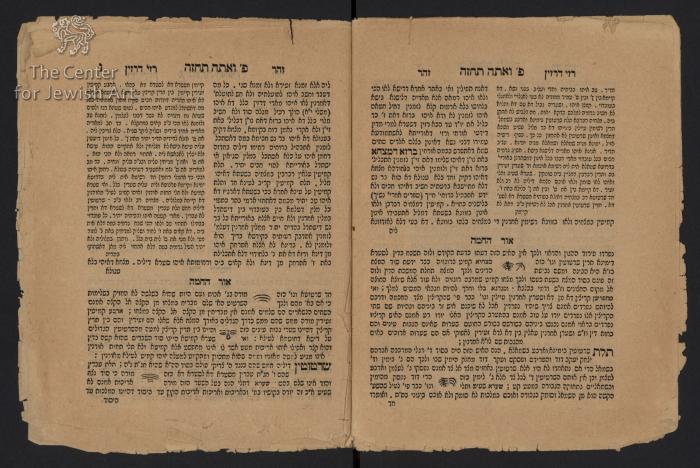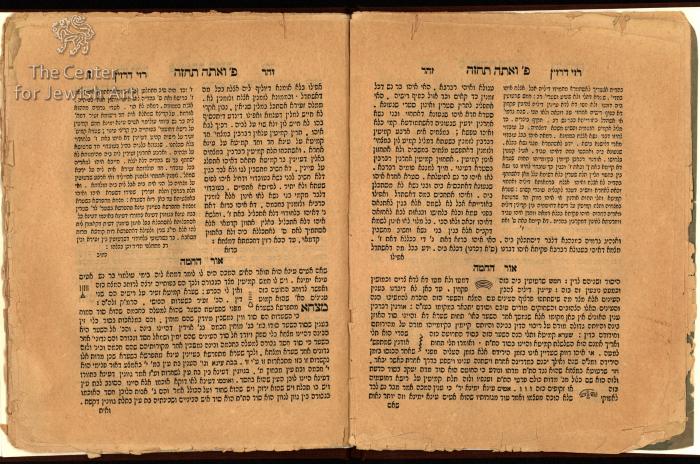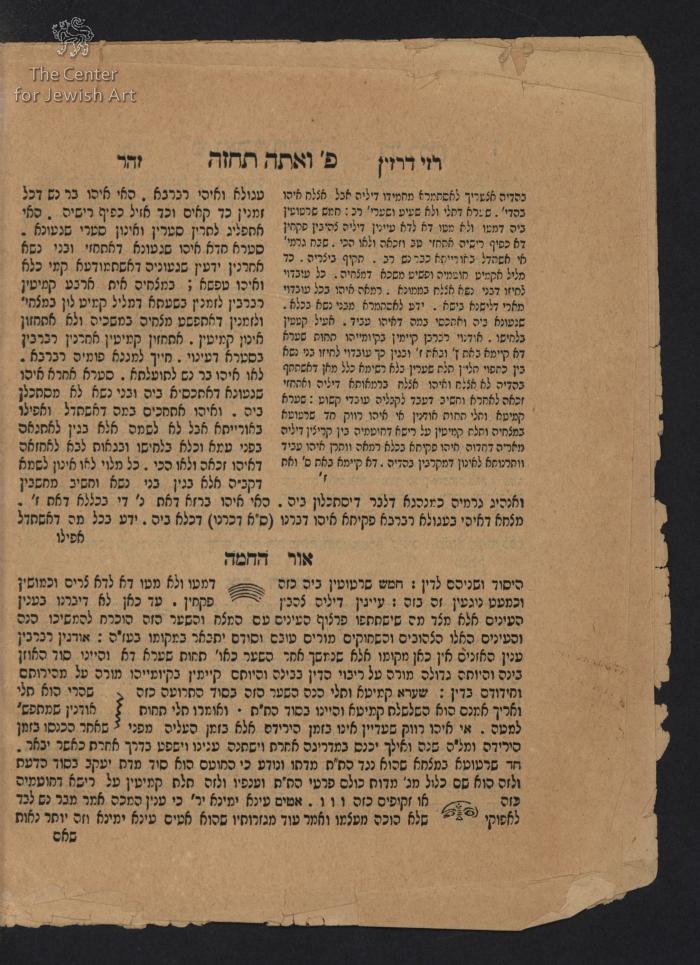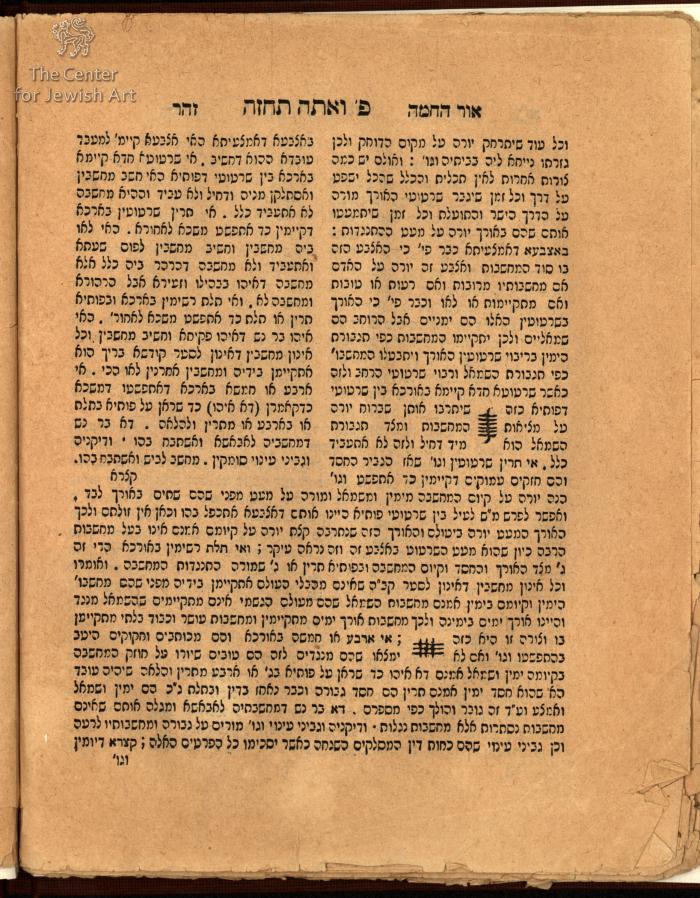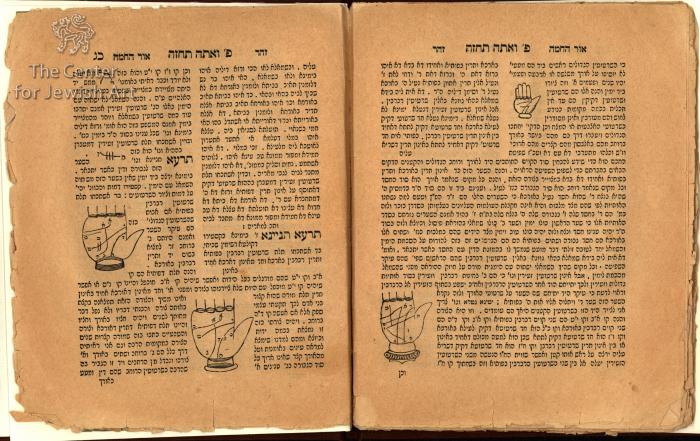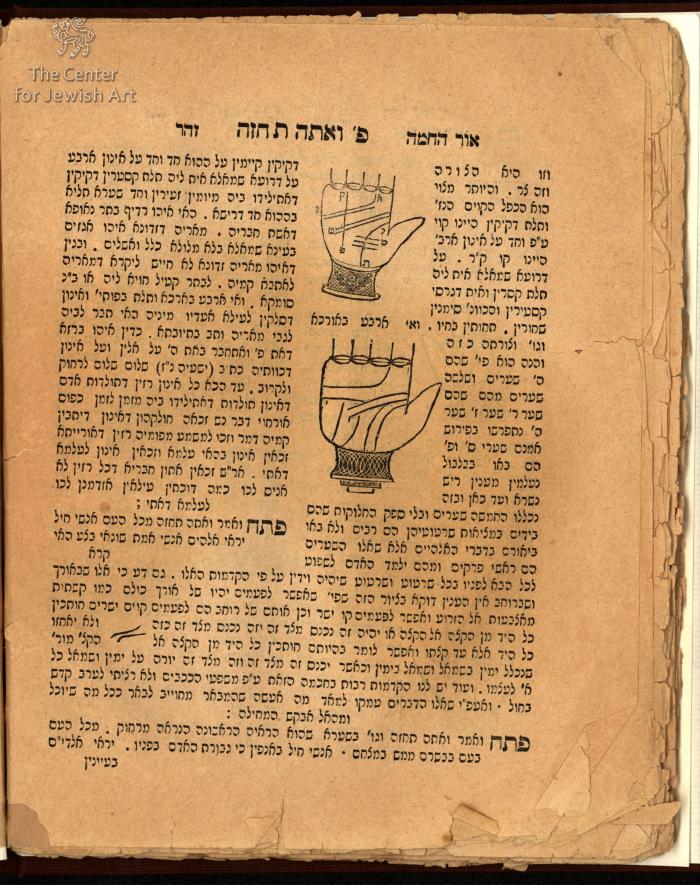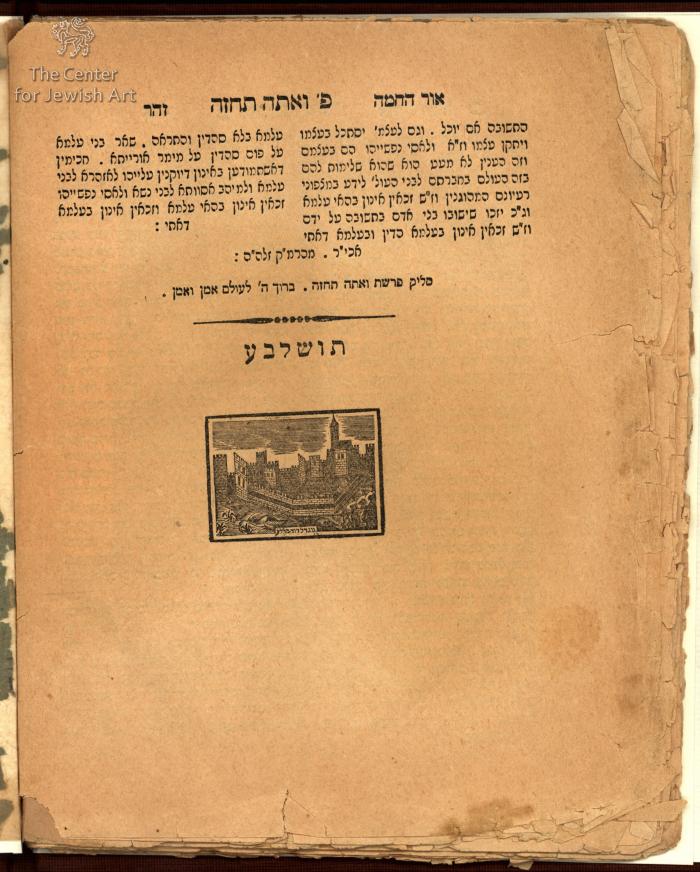Obj. ID: 38070 Machazeh Avraham by Avraham ben Mordekhai Azulay, Jerusalem, 1880

sub-set tree:
This text was prepared by William Gross:
Machazeh Avraham, article of Ve’Atah Techezeh from the Zohar [on the wisdom of the face and hand], including the commentary Or HaChama by Rabbi Avraham Azulai as well as Kabbalistic illustrations. Jerusalem, 1880. S. HaLevi 347. (Printed “with the assistance and aid of the righteous Ga’on Rabbi Yechezkel Halberstam from Sanz” – the Admor Rabbi Yechezkel from Shinowa).
Machazeh Avraham, Divrei Ha-Zohar Be-Hochmot Ha-Partsuf, with Or Ha-Hamah commentaries by Rabbi Avraham Azulai, with 60 illustrations. Jerusalem, [1880], Yoel Moshe Salomon printing.
Abraham ben Mordecai Azulai (c. 1570–1643) (Hebrew: אברהם בן מרדכי אזולאי) was a Kabbalistic author and commentator born in Fez, Morocco. In 1599 he moved to Palestine and settled in Hebron.[1] In Hebron he wrote a commentary on the Zohar under the title Kiryat Arba (City of Arba (in Hebrew four); Gen. xxiii.2). The plague of 1619 drove him from his new home, and while in Gaza, where he found refuge, he wrote his Kabalistic work Chesed le-Abraham (Mercy to Abraham; Micah vii.20). It was published after the author's death by Meshullam Zalman ben Abraham Berak of Gorice, in Amsterdam, 1685. The work is a treatise with an introduction, אבן השתיה (The Cornerstone; see Talmud Yoma 53b), and is divided into seven "fountains" (see Zecharia iii.9), each fountain being subdivided into a number of "streams." A specimen of the work Chesed Le-Avraham, taken from the fifth fountain, twenty-fourth stream, p. 57d, of the Amsterdam edition:
On the mystery of Gilgul (reincarnation) and its details: Know that God will not subject the soul of the wicked to more than three migrations; for it is written, "Lo, all these things doth God work twice, yea thrice, with a man" (Job xxxiii. 29). Which means, He makes him appear twice and thrice in a human incarnation; but the fourth time he is incarnated as a clean animal. And when a man offers a sacrifice, God will, by miraculous intervention, make him select an animal that is an incarnation of a human being. Then will the sacrifice be doubly profitable: to the one that offers it and to the soul imprisoned in the brute. For with the smoke of the sacrifice the soul ascends heavenward and attains its original purity. Thus is explained the mystery involved in the words, "O Lord, thou preservest man and beast" (Psalms xxxvi.7 [R. V. 6]).
He died in Hebron on November 6, 1643.[2]
One of the manuscripts that he left to his descendant, Hayyim Joseph David is also published. It is a Kabalistic commentary on the Bible, Ba'ale Berit Abraham (Abraham's Confederates; see Gen. xiv.13), Vilna, 1873.
Pirkei Avot – a selection from Chesed le-Abraham





